Features
Trump’s Second Coming and the Tech-Industry Complex

by Rajan Philips
Turning and turning in the widening gyre
The falcon cannot hear the falconer;
Things fall apart; the centre cannot hold;
Mere anarchy is loosed upon the world,
The blood-dimmed tide is loosed, and everywhere
The ceremony of innocence is drowned;
The best lack all conviction, while the worst
Are full of passionate intensity.· W.B. Yeats, The Second Coming
It is pathos time in American politics. In his second inaugural address on Monday, January 20, Donald Trump proclaimed divine causality for his second coming. “My life was saved for a reason. I was saved by God to make America great again,” declared Trump. He was referring to the failed attempts on his life during the election campaign.
But there was no hint of humility or any offering of thanks for God’s mercy. Neither attribute is a part of his constitution, and Trump owes nothing to the god he has created for himself to be used as a marketing embellishment. While there is nothing eschatological about Trump’s second coming, what rings familiar is Yeats’s second coming foreboding from a different era a hundred years ago. The Irish poet’s insight forcefully captures Trump’s America – where the best lack conviction and the worst have all the intensity.
An even more powerful insight as well as foresight of what is now unfolding in America can be found in the writings of the progressive American philosopher Richard Rorty (1931-2007) from the late 1990s. Rorty’s 1998 book, Achieving Our Country: Leftist Thought in Twentieth-Century America, has been noted for its prophetic prediction of “an authoritarian strongman” rising to power taking advantage of the economical struggles of the working classes and their disaffection with over-righteous left-liberals preaching social rights over economic necessities. Trump’s election in 2016 fulfilled Rorty’s 1998 prophesy.
The Dark Years and Beyond
Two years earlier in 1996, Rorty presaged Trump’s second coming in a retro-futuristic essay entitled, “Looking Backwards from the Year 2096.” The essay is presented as an excerpt from a speculative article on ‘Fraternity’ published in a 2095 symposium edited by symbolically fictional Cynthia Rodriguez, SJ and Youzheng (not Kash) Patel, and offers these glimpses of light at the end of a long Trumpian tunnel:
“Our long, hesitant, painful recovery, over the last five decades, from the breakdown of democratic institutions during the Dark Years (2014-2044) has changed our political vocabulary, as well as our sense of the relation between the moral order and the economic order. Just as twentieth-century Americans had trouble imagining how their pre-Civil War ancestors could have stomached slavery, so we at the end of the twenty-first century have trouble imagining how our great-grandparents could have legally permitted a CEO to get 20 times more than her lowest paid employees. We cannot understand how Americans a hundred years ago could have tolerated the horrific contrast between a childhood spent in the suburbs and one spent in the ghettos. Such inequalities seem to us evident moral abominations, but the vast majority of our ancestors took them to be regrettable necessities.”
Rorty died one year before Obama was elected, but he was spot on in setting the start of the Dark Years that began with Trump’s foray into politics to negate the promises of Obama’s presidency. But Trump was not a one-term aberration as many thought he would be, and Biden’s presidency did not turn out to be a permanent restoration after Trump. Indeed, another American prognosticator, Harvard University’s Michael Sandel, has called the Biden presidency an interregnum between Trump’s two terms. Trump is now musing about a third term and there is no limit to what he thinks he can do. He might even fancy that he is physically immortal. But there are limits to what he can actually do and even to the lasting effects of all his executive orders and odours that he has been issuing in the first two weeks of his second term.
In Rorty’s sweep of American history, Americans overcame the scourge of slavery in their first hundred years, and they opened the age of human rights and social rights for all peoples in the next hundred years. The Dark Years under Trump are the culmination of the tussles between the promises of the welfare state and supremacy of the market; the frustrations of socialist endeavours followed by the fanaticism of globalization; the fragmentation of societies and lopsided wealth distribution between the overclass of the super-rich and the professional and cultural elites, on the one hand, and the mass of underclasses, on the other; and the rise of populisms targeting the very structures that were created to expand equality and inclusivity as deep state enemies of the people.
Rorty is optimistic that by 2044, twenty first-century Americans, like their predecessors in the earlier two centuries, will find their enlightened way out of the current darkness by rediscovering fraternity and unselfishness and moving past the insistence over rights and their denial. Fraternity, for Rorty, “is an inclination of the heart,” and “not the sort of thing that anybody can have a theory about or that people can be argued into having.” The sources for this metamorphosis will come not from philosophers, lawyers, political theorists or social scientists, but from a “political discourse dominated by quotations from Scripture and literature” that have always been a huge part of the American spirit and ethos. From the likes of John Steinbeck’s “Grapes of Wrath,” and the “social gospel theology” of Walter Rauschenbusch.
If Rorty’s end goals seem utopian, the means to them that he advocates are not. Nor are they ahistorical. The means involve reconstituting the old “coalition of trade unions and churches” that would “topple(d) the military dictatorship in 2044” and “retain(ed) control of Congress by successfully convincing the voters that its opponents constitute ‘the parties of selfishness’.” While Rorty’s prescience is remarkable, even though there is no military dictatorship, it could not be expected to be microscopic about the specific aspects of the current darkness and the way out of it.
For instance, Rorty could not have presaged in any detail the personification of the American crisis in a president called Donald Trump. What might be worrisome for the here and now is whether Trumpism and its hangover could last as far as 2044. To borrow from Scripture, Trump is turning what was set up to be “government of the people, by the people, for the people”, into a “den of thieves,” by the super-rich, for the super-rich. His MAGA (Make America Great Again) universe has always been enthralled by what was mistakenly magnified to be Trump’s business talent and acumen. The truth of the matter is that Trump always knew that he never belonged in the club of the great captains of American capitalism. Now he is pursuing the illusion of presidential greatness.
He seems to be proving to be far more successful in politics than he has been in business. His business was primarily limited to the parking lots and vacant parcels of capitalism, i.e., property development. And he thrived not by playing straight but going crooked all the time. He is deploying the same methods in politics to good, rather bad, effect. He has overshadowed four living former presidents (Clinton, Bush, Obama and Biden), and has bested the two best female candidates who challenged him – Hillary Clinton and Kamala Harris.
A slight majority of American voters ignored and rejected Kamala Harris’s warnings that Trump was carrying an Enemies List, and that his second term would be dedicated to implementing Project 2025 – a conservative road map for using the Trump presidency to overhaul the federal government structures and dismantle the social welfare and civil rights scaffoldings that have been put in place by Franklin Roosevelt’s New Deal and Lyndon Johnson’s Great Society initiatives. Trump is now fully bought into upending them, and is blindly signing Executive Orders drafted by his policy minions.
True to form, the orders are creating chaos and confusion all around, and the executive order to end the funding of federal agencies and programs, all of which have been created by law, had to be rescinded within 24 hours in the face of court challenges and stay orders. The method in all the madness of the Trump presidency is keeping the MAGA base happy and looking after Trump’s super-rich sponsors.
To keep his base happy, Trump has pardoned all 1,500 or so criminals who were already jailed or facing prosecution for the 2021 January 6 insurrection at the Capitol to overturn the results of the 2020 presidential election. That has not gone down well with police organizations, courts and a majority of the population including Republicans. Trump has also fired all the lawyers in the Department of Justice (DOJ) who were involved in indicting Trump for inciting the January 6 insurrection. That should send an unflattering message to Chief Justice Roberts who has defined presidential interactions with the DOJ as a core executive function protected by absolute immunity.
The deportation of illegal immigrants was already a common practice under the Obama and Biden Administrations. But Trump is making a show of it by televising the rounding up and handcuffing of immigrants and deporting them on military aircrafts as opposed to commercial airlines.
A third sop to the base is Trump’s threat to eradicate the policy and programmes implemented by the federal government to promote diversity, equity and inclusion (DEI) in the hiring of government employees and contractors. Their origin goes all the way back to President Kennedy’s 1961 Executive Order that started the American Affirmative Action. Now Trump wants to end it and there is no level too low that he will not stoop to end DEI. He has been doing just that in the wake of the tragic midair crash last Wednesday of a passenger plane and a military helicopter over the Potomac River in Washington.
Rather than showing presidential compassion and empathy over the death of everyone in the two ill-fated aircraft, 67 in all, Trump has taken to blaming Obama, Biden, and Biden’s Transportation Secretary Pete Buttigieg (one of Biden’s more brilliant cabinet ministers) and their DEI hiring practices for the crash. Even Republican politicians are disgusted at the crude crassness of Trump’s politics.
The Tech-Industrial Complex
In his farewell address to the nation on January 15, outgoing President Biden warned of the danger of a “tech-industrial complex” in the form of “an oligarchy (is) taking shape in America of extreme wealth, power and influence that literally threatens our entire democracy, our basic rights and freedoms, and a fair shot for everyone to get ahead.” Biden was following the example of President Eisenhower who had similarly, in his farewell address in 1960, warned of the danger of a military-industrial complex. More than hundred years earlier Theodore Roosevelt had warned of the danger of money power in American politics.
These presidential warnings betray the tensions between the power of capital and the political power of the state. While there is no illusion about the sway that money power and corporate elites have had over any and all governments, never before has an American president surrounded himself with all the richest men the way Trump is doing now. There seems to be no billionaire woman yet who is a member of Trump’s White House billionaire club. What is also unique about this club is that it is comprised entirely of big tech billionaires.
 They are a different breed and are the exponents of what the Greek economist Yanis Varoufakis calls ‘Techno Feudalism.’ One that has been devouring industrial capitalism of old and replacing its two pillars of markets and profits with ‘digital trading platforms’ and ‘cloud rents.’ More on that for another time. The brazenness of this cabal and its agenda run diametrically counter to the nativist compulsions of MAGA populists. Not to mention the internal contradictions and egotistical clashes within the cabal itself.
They are a different breed and are the exponents of what the Greek economist Yanis Varoufakis calls ‘Techno Feudalism.’ One that has been devouring industrial capitalism of old and replacing its two pillars of markets and profits with ‘digital trading platforms’ and ‘cloud rents.’ More on that for another time. The brazenness of this cabal and its agenda run diametrically counter to the nativist compulsions of MAGA populists. Not to mention the internal contradictions and egotistical clashes within the cabal itself.
The chasm between the tech cabal and the rest of the country couldn’t be deeper or wider. In this century so far, the top 1% of Americans, or 3 million people, own more than a third of the national wealth, and tech cabal is at the apex within this group. For the bottom 50% of Americans, or 150 million people, their share of the national wealth is only 1.5%. For the American households, the median household net worth is about $193,000 and median annual household income is about $81,000. It is their cost of living and affordability challenges that Trump exploited to win the presidential election. But after taking his oath as president, and amidst two weeks of non-stop issuance of executive orders, he has said little or nothing about the people’s main grievances that he got elected to address.
At the same time, Trump is pushing his party in Congress to give him the budget to jumpstart his tax reduction agenda amounting to $4 trillion. He needs it to keep his bargain with his billionaire club. But the Republican Party with slender majorities in the Congress and the Senate is not offering Trump its unanimous support without which nothing could be passed by Congress.
For this reason, Trump is looking for alternative revenue sources to accommodate his tax cuts. They include imposing tariffs on imports that has global implications, freeze on federal grants and programs, revenue from increased fossil fuel production and downsizing government. But none of them can be easily implemented or achieved. The cuts to programs to enable tax cuts for the wealthy will impact everyone who is not wealthy and will mobilize their opposition. Democrats are gearing up for the fight, calling Trump’s tax cut agenda – “a contract against America.” The midterm elections in 2026 will show which way the political wind is blowing.
Features
The Aftermath of the Parliamentary Elections of 1970
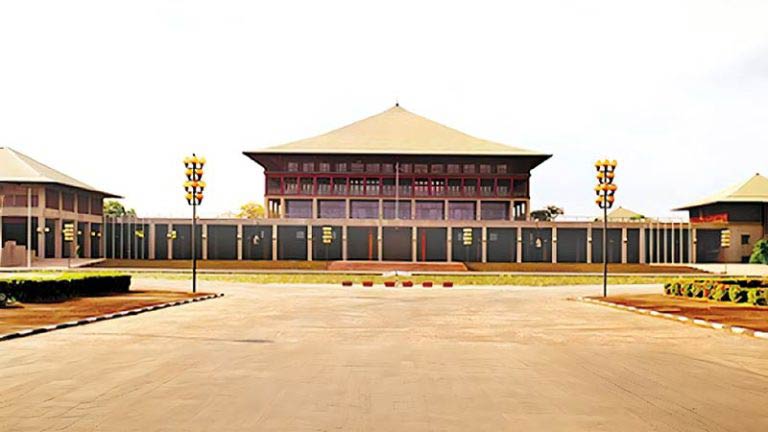
Lessons from my Career; synthesising management theory with practice – Part 2
by Sunil G Wijesinha
The Kamkaru Anduwa
I was in the last year of my training and stationed at the State Engineering Pre-cast Yard at Narahenpita. I was on a unique project experimenting with a concrete boat modelled on a popular FAO wooden fishing boat design. The election fever was at its peak. The workers had high hopes for a “Workers Government” (Kamkaru Anduwa). They were expecting a “dictatorship of the proletariat, ” hoping to end all their woes. They were promised the establishment of “Janatha Committees”, which would oversee the work of the officers and engineers. The spirits were high because the UNP government was no longer popular, and the United Front coalition led by the SLFP was tipped to win in a landslide.
I was very careful and avoided any semblance of affiliation or partiality to any ideology. One of my colleagues was a diehard Samasamajist who would forward compelling arguments as to why socialism and a state-run economy would be the best for the country.
The Aftermath
Election Day was, as usual, a holiday. By the early hours of the next morning, it was clear that the United Front of Mrs Bandaranaike, along with the Trotskyites (Samasamajists) and the Communist Party had won convincingly. When I arrived at my worksite that morning, what I witnessed was shocking. The Works Manager was pulled out of his office by the workers and kicked out of the site. It was celebrations and rejoicing and hooting and jeering. No one was working. No one was in charge. It was anarchy.
My boss, who was stationed at the Head Office, decided to make a site visit. He obviously chose the wrong day. As he arrived, he was greeted by the workshop union leader with lit crackers thrown at his body. There was nothing I could do against a massive hostile crowd. Being a burly man, he charged at them, and they all retreated but quickly returned with even more crackers. Finally, my boss decided to exit and beat a hasty retreat. The workers were jeering and hooting until he was out of sight. He had done no wrong, but unfortunately, he was a part of the “bourgeois” who the workers despised.
One of the foremen who often participated in our arguments during tea and lunch breaks remarked, “Mr Wijesinha, we have still not figured out which party you supported.” I was thankful for my neutrality. If not, I would have been one of those who were driven out with crackers.
A little while later that day, a gang of red-shirted supporters arrived, led by a well-known Samasamajist. He addressed the cheering workers about the wonders that would soon unfold and demanded that all stop work and come to a celebratory meeting near the Regal cinema.
We, too, left the site in the early afternoon because we had to attend a scheduled monthly lecture by a senior engineer at the Head Office. The subject was “Labour Management”. After arriving at the Head Office, we learned of the horrors that morning. The General Manager had been forced to kneel and worship a photograph of Mrs Bandaranaike. We noticed many professionals in groups discussing the future for them while many at lower levels were celebrating. Some of the engineers left the country a couple of months later. We got the news that there was no celebratory meeting near the Regal cinema, but it was a ruse to collect people to attack Lake House, which was believed to have supported the defeated UNP.
When our lecturer didn’t turn up for the lecture, I went to his office to remind him that we were waiting for him and that it was well past time. He responded that having observed the new environment unfolding, he could no longer lecture on “Labour Management.” We were happy to go home early that day.
The next morning, the situation at the site was very different. The workers were discussing and boasting about how many Lake House typewriters they smashed, how many bundles of newspapers they set on fire, and so on. It took a couple of days to restore some order at the site.
In a few months, the Euphoria was over. The workers who would telephone their political masters and address them as Comrade (Sahodaraya) began to drop this salutation and addressed them as Sir, much to the amusement of the officers. The workers realised very soon that a Kamkaru Anduwa was, in reality, not what they imagined and that it was not going to be. However, perhaps in frustration or anger, the Golf Links Housing site experienced a riot. The workers set upon the management for no apparent reason. It took months for peace to return to the pre-election level.
Learning Lessons
Labour management was never the same again, and this was a major turning point. Gone were the days when officers could shout at, could throw their shoes at, punish, and penalise workers at their whims and fancies. While the carnival was over for the workers, the management also learned many lessons.
I did some reflection in the following months, having learnt in theory how labour management had evolved historically. First, it was the KITA style (meaning “kick in the arse”) type management, then came the Frederick Taylor movement, where engineers designed the best way and only the “hands” of the workers were used. Thereafter came the Human Relations School of Management with a more humanistic approach to management. In other words, they proposed treating the worker not merely as a pair of hands but as a human being with a “heart” and feelings. Finally, the Japanese proposed that the in addition to hands and a heart the worker has a significant unused potential: the brain.
At one of the lectures by a senior engineer, we were guided on a more humanistic approach to management. His advice was never call a worker by his number (which we would often do), help him in difficult times, never financially penalise a worker (badata gahanna epa), give small inexpensive gifts to their children. I followed this good advice. It was bolstered and became more systematic after learning the Japanese concepts with similar philosophies in later years. I have been successful in managing labour and unions. The paradigm shift in thinking has been beneficial to the country, although I have often been accused of being a Marxist or a person who spoils the workers. Nevertheless, I will vouch for my approach to labour management using 1970 as a turning point where we all learnt lessons.
(Consultant on Productivity and Japanese Management Techniques
Retired Chairman/Director of several Listed and Unlisted companies.
Awardee of the APO Regional Award for promoting Productivity in the Asia and Pacific Region
Recipient of the “Order of the Rising Sun, Gold and Silver Rays” from the Government of Japan.
He can be contacted through email at: bizex.seminarsandconsulting@gmail.com)
Features
Covid-19 Lockdown in Manila
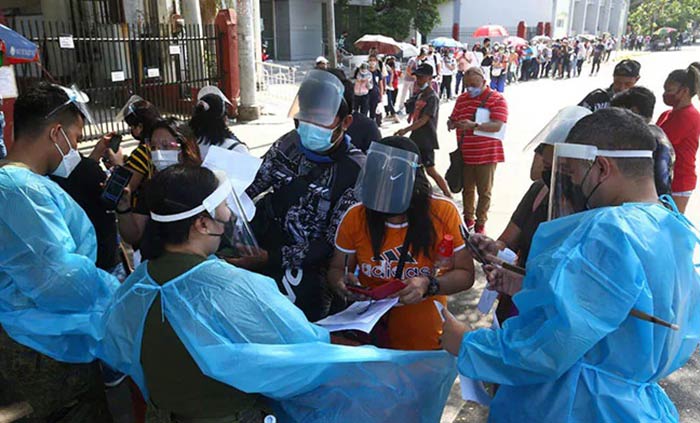
Media vita inmorte sumus (Amid life, we are in death)
by Jayantha Perera
In the second week of March 202I, I returned from Colombo and Shyamala from New Delhi to Manila. We just learned about the Philippines government’s decision to impose a total lockdown in Metro Manila starting over the weekend to combat the spread of the COVID-19 virus. The high risk of getting the virus dawned on me when I landed at Singapore airport early in the morning after having travelled overnight from Colombo. The airport was almost abandoned. A few passengers were waiting for their flights.
Nobody walked around without a mask. The flight from Singapore to Manila was a nightmare for me as the couple who sat next to me constantly coughed and cleared their throats under their masks. A harassed flight steward looked like a nurse at an intensive care hospital in personal protective equipment (PPE). She wore a mask and a face shield and moved fast from one row of seats to another, dropping brunch boxes on passengers’ tray tables. I declined my brunch box because I was scared to remove my mask to eat or drink.
During the weekend, Shyamala and I walked to the Greenway, a favourite public walking path. It was the most beautiful time in Manila. Trees were newly green, and plants were blooming with flowers. The sky was blue, and the sun shone brightly. The air was fresh. A marshal accosted us and asked us what we were doing away from home. Before we could answer, he told us we were supposed to be home. He allowed us to walk one length of the Greenway before we returned home.
We watched the TV to understand the magnitude of the pandemic and government-imposed dawn-to-night lockdown. It took us a while to understand the different stages of quarantine – ‘enhanced community quarantine’, ‘modified enhanced community quarantine’, ‘general community quarantine’, and ‘modified general community quarantine.’ Each lockdown type specifically focused on two groups of the population – the young, below 20, and the elderly, 60 or more.
As an elderly couple, Shyamala and I were supposed not to go out even to buy food and other essentials. The local Government of Bonifacio Global City (BGC) issued an official order outlining the rules and regulations for all BGC residents. At the same time, we received a memorandum from the Condominium Management Committee, which explained the local Government’s rules and regulations in detail. Only one household member, excluding the elderly, can go out at a time with the official pass issued by the local Government for a specific and essential need, such as buying food and medicine.
There were rumours that the Police had harassed several housemaids who walked in small groups with their dogs on roads and in parks. We heard some foreigners jogging on the streets were arrested for not carrying their curfew passes. Infrequently, an armoured vehicle with soldiers moved slowly on roads, announcing that residents should stay home and follow the curfew hours from 4 pm to 6 am. Manila looked like a sieged city.
Shyamala implemented a tertiary lockdown at home, a testament to her adaptability in the face of adversity. She instructed me to collect the Herald Tribune newspaper daily from the front office of the condominium, a task I undertook with caution, wearing rubber gloves and leaving the newspapers on our balcony table for three days before reading them. She also devised a meticulous system for handling groceries and other deliveries, demonstrating her resourcefulness in these challenging times. Edna, our helper, and I collected food shipments at the Delivery Collection Centre, ensuring each item was carefully placed on the balcony table for 24 hours. After that, Edna washed them with condis water.
Shyamala kept a small towel on the table at the apartment entrance for door and car keys, coins, receipts, and cell phones. She also had a large stock of masks and used them to replace overused masks of service providers, often with a rebuke. I occasionally forgot to wear my mask when I went out of the apartment to Shyamala’s consternation. She thought I was safe only if I were with her, as she carried one or two extra fresh masks and a strong antiseptic spray in her handbag.
My 70th birthday, falling on April 8, was a significant milestone, a reminder of the biblical age of three scores and ten years. Despite the heavy curfew, Shyamala was determined to celebrate. She phoned several cake shops and found one willing to deliver a jelly cake through a bicycle man, who navigated five army barriers to ensure the cake arrived intact. We could not invite friends except my father-in-law, who lived in the same building.
Shyamala and I had a lot of time because of the lockdown. Often, we asked each other whether it was a Wednesday or a Thursday? The word, weekend, disappeared from our vocabulary. In the early months of the pandemic, we spent most of our time watching the TV to learn about the virus, its transmission, and what precautions we should take. We learned we would not get large boils in our armpits or groin if we contracted the COVID-19 virus, as the Plague victims in medieval Europe did. It was a great relief to know that rats and fleas were not the vectors of the disease. The virus caused breathlessness, dry cough, and pneumonia. At least these symptoms were decent compared to that of the Plague. To my dismay, however, I learned that my vaccination against pneumonia was useless in fighting the COVID-19 virus.
Although I had more time, the time available for productive work shrank. I went for a morning walk at 6.30 when walking at a public park was allowed for elderly people. Breakfast took more than an hour. Shyamala, without fail, reminded me of the second coffee time at 10 am and was waiting for a cappuccino. After coffee, we chatted and read the ‘released’ three-day-old newspapers. By 11.00 am, I was at my desk. I started writing poetry to keep me busy for at least two hours daily.
I started paying for most services electronically. A mobile private banking service called G-Cash became popular as commercial banks ceased functioning. With G-Cash, we began to buy useless gadgets that were delivered home. Once, I enthusiastically ordered a high-speed mouthwash machine. I imagined it would be a miniature water cannon that would flush my mouth in a few seconds. However, the gadget had no mechanism to pressurise water, so it only dripped water into my mouth.
Every day, Edna proudly announced lunch was ready at noon. Shyamala collected me from my study and brought me to the dining table. After lunch, according to the home lockdown rules, it was time to rest. After a quick glance at the news on CNN and BBC, we moved to Netflix for an hour. Then was the nap time. Occasionally, I napped in the afternoon; for Shyamala, it was a daily ritual. She could not operate in the afternoon unless she got her forty winks. I usually slept 60 minutes, but only twice a week. On other days, I spent my time reading, writing, or watching National Geographic channels.
From teatime until dinner, we read or wrote letters and visited my father-in-law for a chat. Dinner was at 7 pm, and the time was sacrosanct – there couldn’t be any delay in sitting at the dinner table at 7 pm. After dinner, we watched a movie chosen by Shyamala. After the movie, we read our tablets and chatted with friends online. Shyamala retired at 10pm, and I listened to Sinhala songs on YouTube for an extra half an hour before retiring. Songs brought memories from the distant past in Sri Lanka and often made me nostalgic about Sri Lanka.
Staying at home, washing hands frequently, keeping social distance of two metres, and wearing a mask were simple rules. Doctors recommended no food or drink restrictions, for which I was grateful. The municipality allowed one hour of outdoor time for the elderly between 6 and 7 in the morning. We were supposed to stay at home or exercise closer to our residence at a designated zone for the elderly. The Greenway was out of bounds for us as we lived more than 500 metres away from it.
I woke up early to beat the 7 am deadline. If I passed the deadline, I covered my head with a large cap to conceal my white hair to avoid the attention of marshals on the road and at the park. I did not want to get accosted by a policeman because of my white hair. Shyamala was more adventurous than I was. Once, she took a cloth sack, wore her oversized sunglasses, and walked to a shop to buy cheese and good crusty bread.
Since then, she wanted me to go to the same shop to buy cheese, olives, pasta, and milk at the risk of arrest. She assured me that nothing would happen to me if I covered my white hair. Once, Shyamala opined I should dye my hair black and walk with the gait of a busy young man. She also thought revealing my legs might help hide my age, as I still had young legs! Another day, Shyamala picked up her father’s pass and took me for a long walk past a police station. I walked a few metres ahead of her, feeling safe and comfortable.
The Filipino people are known for their kindness and care for the elderly. Shyamala and I decided to live in the Philippines after retirement because of the Special Resident Retiree Visa, which gave us several privileges. We do not have to pay income tax. We get a 20% discount at coffee shops, restaurants, taxis, and cinemas. We do not stay in line to get services — getting a cab at the airport, withdrawing money at a commercial bank, or meeting an agent at a telecommunication centre.
After the lockdown, many privileges became inaccessible because the elderly were prohibited from leaving their homes. The Foreign Ministry declared Retiree Visa holders were not permanent residents of the Philippines. As a result, if we left the Philippines, we could return only when the Government allowed us to return. The underlying thought behind this policy was that retirees were a redundant segment of the local population highly vulnerable to COVID-19. The Government did not want to use its limited medical facilities and resources on the elderly. It wanted to keep such facilities and resources for income earners who fall into the age category of 21-60 years. Thus, the elderly had become a pariah group.
On TV we often saw crowded hospitals with lined-up ambulances waiting to bring COVID-19 patients to intensive care units. Several gowned and masked ‘frontline health workers’ battalions were waiting for calls from different parts of the city to transport critical patients.
Amid Corvid, the frontline health workers threatened to stage a ‘revolution’ against the Government, especially against the president, unless the Government provided relief from their non-stop services at hospitals. The president took the idea of revolution seriously and upgraded general community quarantine to “enhanced quarantine” so that health workers could break their heavy work schedule while the population lived under a total curfew. The president blamed the workers for “demeaning” the Government and giving citizens the wrong impression that the Government was not controlling the virus.
Staying at home all the time is not a common practice among the elderly. They may not go to offices or factories but are engaged in vibrant social activities, social services, and travelling. Before the pandemic hit Manila, Shyamala and I travelled abroad several times a year. Also, I travelled four to five times abroad on consultancies in a year. After 2020, the elderly became the last group eligible for overseas air travel.
We worried about our children who lived in Hong Kong, Colombo and Florida. We worried about my father-in-law, who was 93. He had done well during the first 12 months of the pandemic. Then he complained about his lingering lower back pain and shooting pains in his legs. He thought cancer had returned to his lungs and wanted to get tests done. But to visit a hospital had become an elaborate ritual because of the pandemic. Meeting a doctor and getting a few tests done took a whole day. Fortunately, he continued to spend lots of time on the stock market and took financial risks as he had done during the past 50 years. We were glad that he was not depressed.
In mid-2021, we heard that infection and death rates of COVID-19 were increasing at an alarming rate in the Philippines. For the first time, a sense of hopelessness descended upon us. With desperation came fear and uncertainty. We felt we were losing everything we possessed, including life. Slowly, a strict lockdown regime emerged as a “new normal”. It was more stringent than what we knew as “normal.” My life and perhaps Shyamala’s would never be the same again. It was a challenging but also promising thought.
Non-negotiable death
At birth
did not know my past.
Now, on the cusp of death
I do not know where I am,
where I will go.
My existence ring-fenced
I can see its contours
I cannot shrink or expand them.
An invisible hand overseeing it?
Reactivity prolongs my being
And has brought me this far
promising an eternity or nirvana
But Covid can overwrite my fate.
Oh, death, the great equaliser
You have shaken our belief
the young live long,
and the old die soon, to its core.
Now, life is short for everyone!
Appointing beneficiaries
to enjoy my wealth after my death
does not hold true any more,
as the pandemic could consume them
before it visits me.
A sneeze, a cough or a wheeze –
Is it the doorbell that calls
me – my body and mind – to face
the start of disintegration?
Epilogue
During the past several months, I have published a collection of moments from my life (the Collection) in the Sunday Island. A ‘moment of life’ is a memory capsule which records an event of one’s life – an enchantment, a challenge, a loss or an achievement. Some moments are powerful and resurface as coherent stories. Once they are juxtaposed, the narrative of life emerges. The narrative is not a constant; it changes with different permutations of moments. Thus, the narrative of life is fluid and ever-changing. The Collection presents a few moments from my life spanning over seven decades.
I am what I can remember. My memory, filled with life difficulties, hopes, worries, and achievements, is the essence of my being. Such memories are not just recollections but also fantasies and imaginations.
I have randomly selected and elaborated on a few moments from my memory that have, I thought, created my ‘self’. I could have included more life moments, but I refrained from doing so believing that the reader could construct my ‘self’ in her mind from the narrative emerging from the moments I have presented in the Collection.
A recurring theme in this Collection is grace. In many moments, guidance and assistance came in different forms and from other persons, quite unexpectedly. They helped me tackle challenges and risks and took me through difficult phases of life. I have noticed that such grace brought relief and comfort when challenges and risks seemed insurmountable. Many people came to rescue me, lead me, and protect me. At such times, I often failed to see grace in their actions. But in retrospect, I see their true motives, sacrifices, and benevolence. I appreciate and celebrate their kindness and love by narrating such moments.
Through my experiences, I have learned that planning has its limitations. In my youth, I planned to become a lawyer. But my father’s untimely death at the age of 47 completely changed my life and life chances. Some memories I have highlighted in the Collection initially looked like failures, harassment, and mistakes. But they eventually bettered my life. I also learned the value of patience and keeping my mind open to new experiences. This openness has led to better results and happiness in my life.
Features
A Wanderer in Palestine

An account of a visit to Palestine over 60 years ago
(Excerpted from Selected Journalism by HAJ Hulugalle)
To grow oranges for profit and pleasure, was one of my prewar ambitions. And in the course of learning the business I met, at different times and places, some exceptional persons including Mustapha Kemal Pasha Ataturk, Emir Abdullah, King of Jordan, and Mrs. Golda Meir, now Foreign Minister of Israel.
By reading magazines and books on citriculture I had already become an arm-chair orange farmer, just as one becomes an armchair traveller by reading books of travel. But the appetite grows with what it feeds on and I persuaded myself that it was necessary for my purpose to visit a country where oranges were grown scientifically and successfully.
Of course it could not have been only a desire to learn how to grow citrus fruits that prompted me to take a tourist class passage to Port Said, and entrain for Jerusalem from El Kantara, a railway station on the Canal bank. Incidentally, it was easier to do this 25 years ago than it is today. There was no exchange control then, travel was relatively cheap and the whole of Palestine was a British mandate.
“To sail beyond the sunset” is an urge which anyone who has gone to school within sight of ships as we did at St. Thomas’s College, Mutwal, cannot readily resist. I set out with no plan but hope to inspect orange groves, acquaint myself with the cradle of three great religions, and observe some of the interesting experiments in agriculture and land settlement carried out by Jews in the sandy wastes of Palestine.
The train, which took me one morning up the holy hill of Zion, ran on the track which General Allenby had put down 20 years earlier to fight the Turks. Jerusalem is an interesting city seen from every approach to it, except the northern.
What I saw was a mediaeval town, capable of conjuring up Biblical images, and very different from what it is today. There were a few modern buildings like the splendid YMCA, King David’s hotel, the Jewish Agency headquarters and a bank or two.
Camel caravans still passed down the streets, and Bedouin from the desert strode with dust on their beards and eye lashes, tapping their staves on the ancient stones.
Jerusalem is now rent in twain. There are barbed-wire barricades, sentries mounting guard, neutral zones and watchtowers. One may not walk as I did, from Jerusalem to Bethlehem, when the almond trees are in bloom, stopping for a rest outside the reputed house of Lazarus at Bethany.
A few minutes after I had put my bag at my place of lodging, I set out with a sense of expectation, nay excitement, towards the Jaffa gate of the old wall city. I carried with me H.V. Morton’s recently published book called “In the Steps of the Master.”
I suppose the first place any civilized visitor to the Jordan side of Jerusalem would want to go to is the Church of the Holy Sepulchre. You are as likely as not to see a peasant woman kneeling in prayer before the Tomb of Christ.
Walking along the narrow lanes, I reached the Gate of St. Stephen, and strolled through it under the gnarled olive trees of the Garden of Gethsamane. Later I climbed towards the Mount of Olives where lived the British High Commissioner, Sir Arthur Wauchope. It would not be possible to make these perambulations now.
On the second day of my visit, I called on an old Ceylon official, Mr. R. G. B. Spicer, formerly Superintendent of Police, Colombo. He was now Inspector-General of Police, Palestine, and wore a blue uniform, like that of a Turkish officer, complete with astrakhan cap. Mr. Spicer loved Palestine. He said that the climate in the spring, when the poppies came out, was like champagne. One could not but feel safe in a country in which the head of the police was your friend.
In those days there were few important cities in the world where a Ceylonese could not find a warm welcome from a fellow countryman. There was Mr. Kira in New York, Mr. Dean Ismail in Istanbul, Mr. Sarlis in Marseilles, and some near relations of Sir Mohamed Macan Markar in Cairo and Jerusalem.
Often I dropped in for a Ceylon meal at the house of Sir Mohamed’s nephew who was in charge of the family jewellery shop in King David’s hotel in Jerusalem.
One day, Mr. J. N. Arumugan and I were in the Winter Palace hotel in Jericho, after a visit to the Dead Sea, when the Emir Abdullah, king of Transjordania, saw us and invited us to take coffee with him. In the course of conversation he showed us a magnificent ruby which he had bought at Macan’s shop.
Every time I entered the Macan Markar house in Mamilia Road, I was greeted by a young Arab servant who kissed my hand. This is an old custom designed to make sure that the guest is not carrying a lethal weapon.
I once spent a day with Sir Mohamed at Cairo, where he was visiting the family business in Shephard’s Hotel. We ate a lucullean Arab meal at his favourite restaurant, during which he told me that whenever he left Ceylon on a trip he took a precious stone and sold it. The proceeds were more than sufficient to cover all his expenses.
Although nobody spoke in those days about a future Jewish state in Palestine, there was evidence everywhere that the Jewish National Home was in fact a state within a state. The Jews had their own university, banks, education and health services, trade unions and cultural life.
It was a time of transition and, with the best will in the world, the British found it difficult to carry out the mandate to the satisfaction of any of the parties concerned. A minor example of this was the administration of justice in three languages. I was present in a law court where the Chief Justice was an Irishman and his colleagues were a Jew and an Arab. A Jewish advocate addressed the court in Hebrew and an Arab advocate addressed it in Arabic. The Attorney General spoke as `amicus curiae’ in English.
One day I went to the Jewish National Fund Offices in Jerusalem and gathered as much information as I could about Jewish activities in Palestine. I was then given a letter to Mrs. Golda Myerson who lived in Tel Aviv. She had just been appointed to the executive committee of the labour organization called Histadrut and was, according to my informant, a live wire.
I had already arranged to spend a fortnight in Tel Aviv and the Jewish farms in the neighbourhood. Tel Aviv itself had sprung up in a suburb of Jaffa (Joppa of the Bible). The housing squeeze in Jaffa had compelled the increasing number of Jews who were arriving in the country to build themselves homes
on the sand dunes near the Mediterranean coast. Hitler’s persecution of Jews was the main cause of the remarkable growth of Tel Aviv within a few years into a modern city, with its plag (a beach by the sea), concert halls, modern flats and a main street named after General Allenby. But it still had the features of a boom town.
The Myersons, husband, wife and two children lived in a half-completed house in a new area. I learned more about the aims and aspirations of the Zionist movement from Mrs. Myserson than from anyone else. Since then, I have followed her career with interest. She became the head of a Political Department of the Jewish Agency and, when Israel became an independent state, she went as ambassador to Russia. She held other offices before she became Foreign Minister in 1956. Mrs. Myerson has now shortened her name to Meir.
Three years ago (when this was written), I was appointed Ceylon Minister to Israel, but when I was about to leave for Jerusalem, I was instructed by cable not to proceed. It was a disappointment to me because I had looked forward to meeting the Foreign Minister whom I had known when she was in charge of a small labour office in Tel Aviv.
Walking from Tel Aviv to Rehovath, I stopped to watch a very intellectual looking young man washing the drains of a cowshed. I got into conversation with him and discovered that he was a Doctor of Science and the son of J.L. Magnes, the distinguished Rector of the Hebrew University at Mount Scopus in Jerusalem. He was engaged in experiments directed at increasing the milk yields of Syrian cows by crossing them with Friesian bulls. As he employed no labourers he washed the cowsheds himself.
I also observed that students at the University not only made their own tennis courts but planted forests – a difficult operation in inhospitable soil – as a memorial to famous men and women.
I wandered about Palestine like a nomad, living sometimes in Jewish co-operative farms with names such as Nahalal, Degania. Peta-Tikvah and Bivath Brenner. I spent time in Bethlehem. Nazareth, Galilee and Carmel.
In the midst of all this activity I did not neglect my study of citriculture. I drank half a gallon of orange juice everyday. I saw orange heaps outside packing houses in Jaffa and elsewhere almost as large as coconut heaps in the Chilaw district.
The Israelis, by self-sacrifice, hard work and intelligence, have transformed their part of the country into a modern western state. But both they and the Arabs have many problems to solve.
I left for Damascus by the desert route to gain further knowledge about how to grow oranges.
(This article was first published in 1961)
-
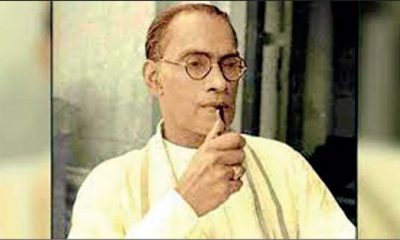
 Opinion6 days ago
Opinion6 days agoCost of ‘Sinhala Only’
-
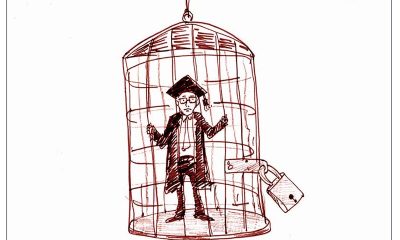
 Features6 days ago
Features6 days agoA conversation that cannot be delayed
-
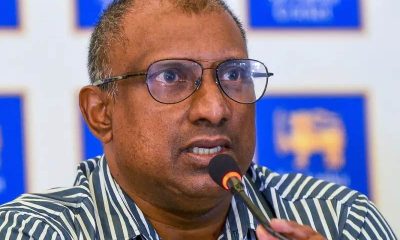
 Sports6 days ago
Sports6 days agoAussies brought the best out of me – Aravinda
-

 Editorial6 days ago
Editorial6 days agoOnly delivery can save govts.
-

 Editorial5 days ago
Editorial5 days agoFish or cut bait
-
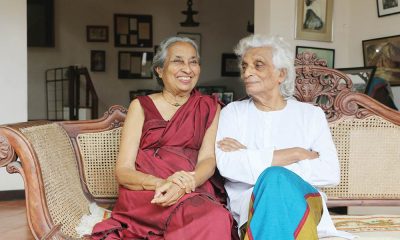
 Features2 days ago
Features2 days agoA singular modern Lankan mentor – Part I
-
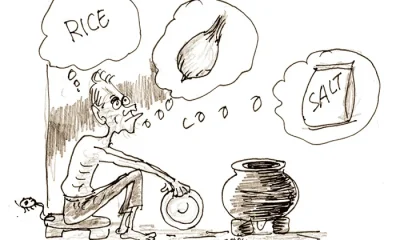
 Opinion5 days ago
Opinion5 days ago‘Not even congee now!’
-
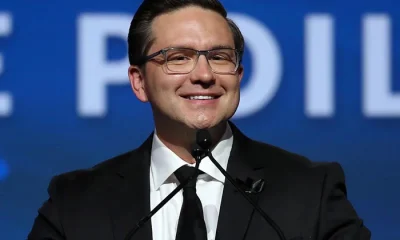
 News4 days ago
News4 days agoWar crimes: Canada’s Conservative Party leader vows to ‘lead the world’ in seeking prosecutions against Sri Lankans












